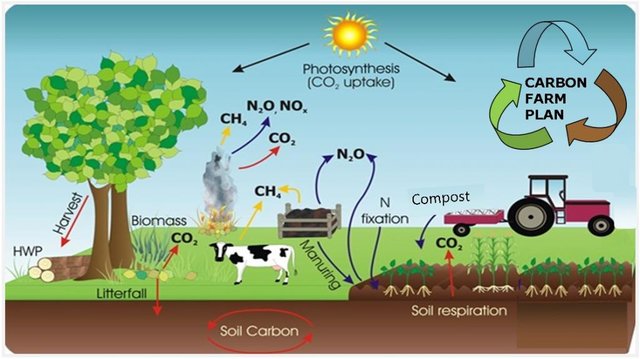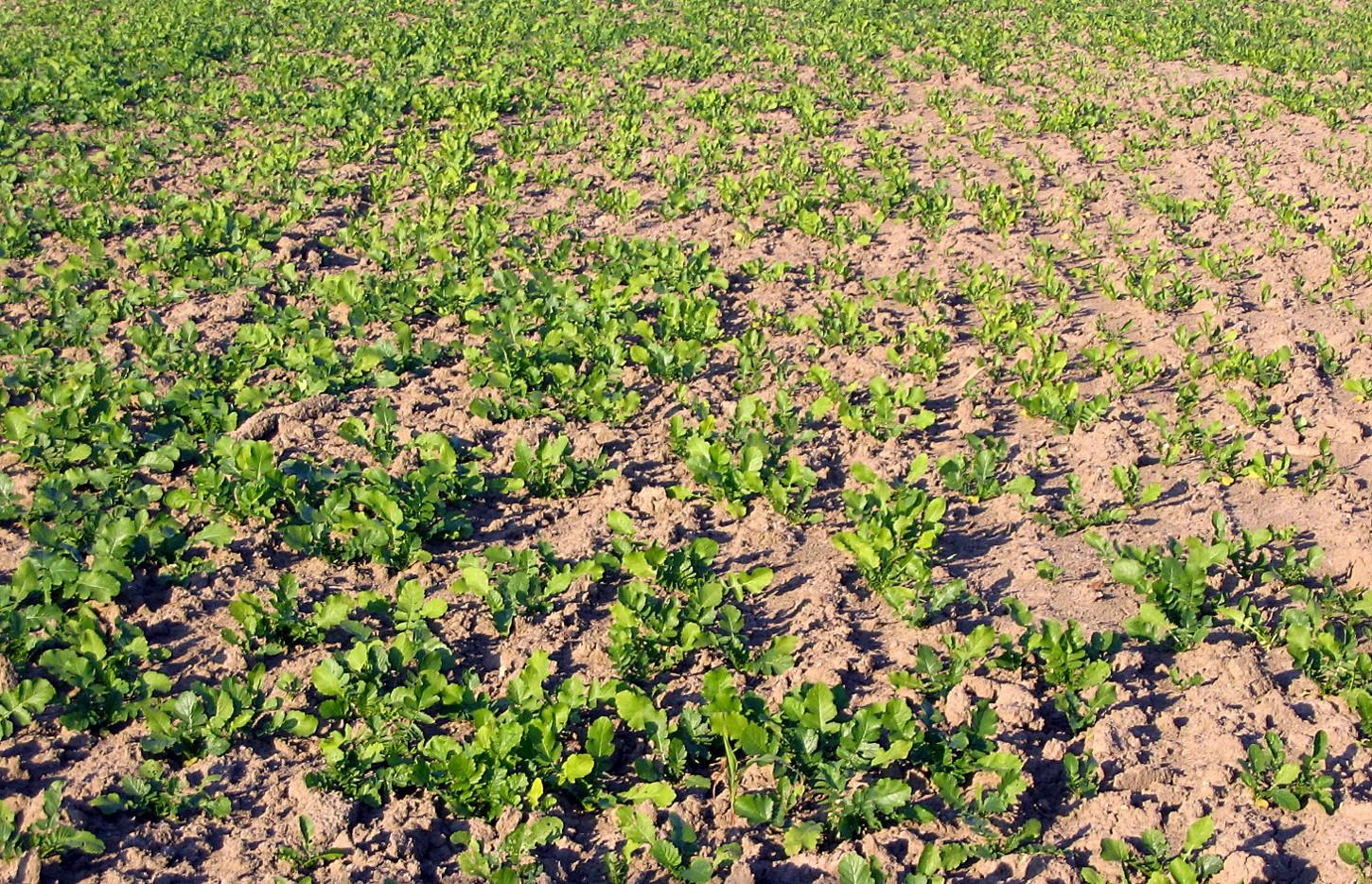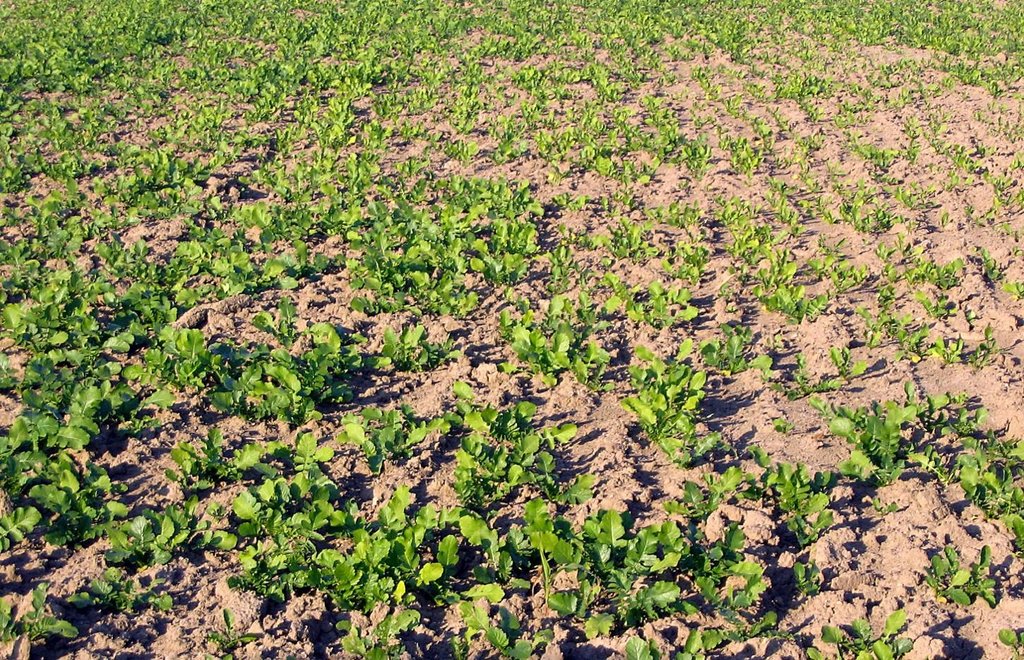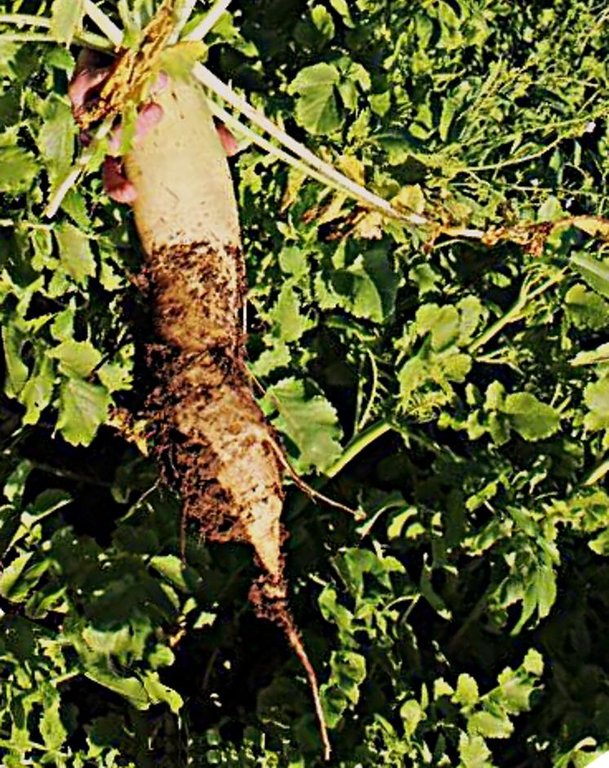Root-oriented cover crops [意大利]
- 创建:
- 更新:
- 编制者: Nicola Dal Ferro
- 编辑者: –
- 审查者: Fabian Ottiger
Cover-crop ad alta capacità produttiva di radici
technologies_1291 - 意大利
查看章节
全部展开 全部收起1. 一般信息
1.2 参与该技术评估和文件编制的资源人员和机构的联系方式
SLM专业人员:
Morari Francesco
francesco.morari@unipd.it
University of Padova
Via 8 Febbraio 1848, 2, 35122 Padova PD, Italy
意大利
有助于对技术进行记录/评估的项目名称(如相关)
Preventing and Remediating degradation of soils in Europe through Land Care (EU-RECARE )有助于对技术进行记录/评估的机构名称(如相关)
University of Padova (UNIPD) - 意大利1.3 关于使用通过WOCAT记录的数据的条件
(现场)数据是什么时候汇编的?:
23/04/2015
编制者和关键资源人员接受有关使用通过WOCAT记录数据的条件。:
是
1.5 请参阅有关SLM方法的问卷

Carbon farming [意大利]
Managing land, water, plants and animals to meet the landscape restoration, climate change and food security.
- 编制者: Nicola Dal Ferro
2. SLM技术的说明
2.1 技术简介
技术定义:
Cover crops with high root root growth capacity as a practice to improve soil quality
2.2 技术的详细说明
说明:
Cover crops will be selected by their capacity to address biomass production towards below-ground tissues. Growing alternative seasonal cover crops between annual crops have the potential to provide multiple benefits in a cropping system.
Purpose of the Technology: Highly developed rooting system will favour the soil quality: from an agronomic point of view, the soil will benefit from natural decompaction and structuring (especially if associated with no-till techniques) due to roots effect. Moreover, root-derived carbon is retained in the soils much more efficiently than are above-ground inputs (e.g. straw, crop residues). As a result, high and deep root productions will increase the more recalcitrant soil organic carbon (SOC) content as well as improve the nutrient cycle. From an environmental point of view, the increase of SOC content due to high root production will favour carbon sequestration within the soil profile and in turn mitigate GHG emisisons.
Establishment / maintenance activities and inputs: Following the critera that has already been adopted in the Veneto region for the continuos soil cover on croplands, the application of root-oriented cover crops will involve the alternation of autumn-winter cereals,
rapeseed or other herbaceous crops with maize, soybean, sorghum etc. Cover crops that will be sown after the main culture will not be neither fertilized nor treated with pesticides during growing, while at the end of the crop cycle they will be buried as green manure in order to improve SOC, nutrient cycle and finally soil fertility.
2.3 技术照片
2.5 已应用该技术的、本评估所涵盖的国家/地区/地点
国家:
意大利
区域/州/省:
Italy
有关地点的进一步说明:
Research trial in Veneto region
Map
×2.6 实施日期
如果不知道确切的年份,请说明大概的日期:
- 不到10年前(最近)
2.7 技术介绍
详细说明该技术是如何引入的:
- 在实验/研究期间
注释(项目类型等):
Innovation in cover crop has been recently carried out through field experiments.
3. SLM技术的分类
3.2 应用该技术的当前土地利用类型

农田
- 一年一作
注释:
Major land use problems (compiler’s opinion): Soils in the low Venetian plain of the Veneto region generally suffer from a loss of soil organic matter (SOM) that is strongly affected by their natural texture and climatic conditions. Moreover, in the last 50 years intensive tillage practices contributed to a further SOM decrease, estimated at 0.02-0.58 t/ha/y of carbon. Finally, high intensive agriculture practices increased nonpoint source pollution and in turn caused a decline of surface and groundwater quality.
Major land use problems (land users’ perception): To date, few farmers have adopted voluntarily the continuous soil cover to reduce a decline of soil fertility and water quality, symptom of poor perception of the problem. Adoption of SLT by farmers was sustained only by means of regional subsidies.
3.3 有关土地利用的更多信息
该技术所应用土地的供水:
- 混合雨水灌溉
每年的生长季节数:
- 1
具体说明:
Longest growing period in days: 210 Longest growing period from month to month: March to SeptemberSecond longest growing period in days: 180
3.4 该技术所属的SLM组
- 改良的地面/植被覆盖
3.5 技术传播
注释:
The technology is not implemented yet in the field and will be proposed as a new technology to be tested.
3.6 包含该技术的可持续土地管理措施

农艺措施
- A1:植被和土壤覆盖层
注释:
Main measures: agronomic measures
Type of agronomic measures: better crop cover, green manure
3.7 该技术强调的主要土地退化类型

土壤水蚀
- Wt:表土流失/地表侵蚀

化学性土壤退化
- Cn:肥力下降和有机质含量下降(非侵蚀所致)

物理性土壤退化
- Pc:压实

生物性退化
- Bc:植被覆盖的减少
注释:
Main type of degradation addressed: Cn: fertility decline and reduced organic matter content, Pc: compaction, Bc: reduction of vegetation cover
Secondary types of degradation addressed: Wt: loss of topsoil / surface erosion
Main causes of degradation: soil management, crop management (annual, perennial, tree/shrub), population pressure
3.8 防止、减少或恢复土地退化
具体数量名该技术与土地退化有关的目标:
- 防止土地退化
- 减少土地退化
注释:
Main goals: mitigation / reduction of land degradation
Secondary goals: prevention of land degradation
4. 技术规范、实施活动、投入和成本
4.1 该技术的技术图纸
作者:
Nicola Dal Ferro
4.2 技术规范/技术图纸说明
Comparison between a traditional cover crop and a selected root-oriented cover crop
Technical knowledge required for field staff / advisors: moderate (in proposing cover crops that are adapted to agro-ckimatic conditions)
Technical knowledge required for land users: low (no further expertise is needed for implementation)
Main technical functions: improvement of ground cover, improvement of surface structure (crusting, sealing), improvement of topsoil structure (compaction), improvement of subsoil structure (hardpan), increase in organic matter
Better crop cover
Material/ species: rafanus, sudangrass, cowpea, sunn hemp
Green manure
Material/ species: rafanus, sudangrass, cowpea, sunn hemp
4.3 有关投入和成本计算的一般信息
其它/国家货币(具体说明):
€
注明美元与当地货币的汇率(如相关):1美元=:
0.9
注明雇用劳工的每日平均工资成本:
21.00
4.6 维护/经常性活动
| 活动 | 措施类型 | 时间/频率 | |
|---|---|---|---|
| 1. | Cover crops: chopping | 农业学的 | |
| 2. | Main crop: seedbed preparation | 农业学的 | |
| 3. | Main crop: harrowing | 农业学的 | |
| 4. | Main crop: weed control | 农业学的 | |
| 5. | Main crop: fertilisation | 农业学的 | |
| 6. | Main crop: harvesting | 农业学的 | |
| 7. | Main crop: sowing | 农业学的 |
4.7 维护/经常性活动所需要的费用和投入(每年)
| 对投入进行具体说明 | 单位 | 数量 | 单位成本 | 每项投入的总成本 | 土地使用者承担的成本% | |
|---|---|---|---|---|---|---|
| 设备 | Chopping cover crop | ha | 1.0 | 343.0 | 343.0 | 75.0 |
| 设备 | Seedbed preparation main crop | ha | 1.0 | 191.0 | 191.0 | 75.0 |
| 设备 | Harrowing main crop | ha | 1.0 | 63.0 | 63.0 | 75.0 |
| 设备 | Weed control main crop | ha | 1.0 | 44.5 | 44.5 | 75.0 |
| 设备 | Harvesting main crop | ha | 1.0 | 152.0 | 152.0 | 75.0 |
| 设备 | Sowing main crop: | ha | 1.0 | 121.0 | 121.0 | 75.0 |
| 植物材料 | Seeds main crop | ha | 1.0 | 191.0 | 191.0 | 75.0 |
| 植物材料 | Seeds cover crop | ha | 1.0 | 191.0 | 191.0 | 75.0 |
| 肥料和杀菌剂 | Biocides | ha | 1.0 | 125.0 | 125.0 | 75.0 |
| 肥料和杀菌剂 | Fertilizer | ha | 1.0 | 254.0 | 254.0 | 81.0 |
| 技术维护所需总成本 | 1675.5 | |||||
4.8 影响成本的最重要因素
描述影响成本的最决定性因素:
Although machinery costs are the largest part of total ones, they are almost completely the same for systems adopting - or non adopting - the technology. As a result, additional seeds as cover crop and field labour for sowing are the main costs for implementation of the technology.
This technoilogy is hypothesized as an innovative application to improve the soil strructure, reduce its compaction as well as increase the SOC content. As a result, costs for maintenance and subsides were estimated on the basis of previous experiences in cover crop management. Therefore they are only hypothetical and do not correspond to a real situation.
5. 自然和人文环境
5.1 气候
年降雨量
- < 250毫米
- 251-500毫米
- 501-750毫米
- 751-1,000毫米
- 1,001-1,500毫米
- 1,501-2,000毫米
- 2,001-3,000毫米
- 3,001-4,000毫米
- > 4,000毫米
农业气候带
- 半湿润
Thermal climate class: temperate
5.2 地形
平均坡度:
- 水平(0-2%)
- 缓降(3-5%)
- 平缓(6-10%)
- 滚坡(11-15%)
- 崎岖(16-30%)
- 陡峭(31-60%)
- 非常陡峭(>60%)
地形:
- 高原/平原
- 山脊
- 山坡
- 山地斜坡
- 麓坡
- 谷底
垂直分布带:
- 0-100 m a.s.l.
- 101-500 m a.s.l.
- 501-1,000 m a.s.l.
- 1,001-1,500 m a.s.l.
- 1,501-2,000 m a.s.l.
- 2,001-2,500 m a.s.l.
- 2,501-3,000 m a.s.l.
- 3,001-4,000 m a.s.l.
- > 4,000 m a.s.l.
5.3 土壤
平均土层深度:
- 非常浅(0-20厘米)
- 浅(21-50厘米)
- 中等深度(51-80厘米)
- 深(81-120厘米)
- 非常深(> 120厘米)
土壤质地(表土):
- 中粒(壤土、粉土)
表土有机质:
- 中(1-3%)
如有可能,附上完整的土壤描述或具体说明可用的信息,例如土壤类型、土壤酸碱度、阳离子交换能力、氮、盐度等。:
Soil fertility is low
Soil drainage/infiltration is medium
Soil water storage capacity is medium
5.4 水资源可用性和质量
地下水位表:
< 5米
地表水的可用性:
好
水质(未处理):
良好饮用水
5.5 生物多样性
物种多样性:
- 中等
5.6 应用该技术的土地使用者的特征
生产系统的市场定位:
- 商业/市场
机械化水平:
- 机械化/电动
说明土地使用者的其他有关特征:
Population density: 200-500 persons/km2
Annual population growth: 0.5% - 1%
5.7 应用该技术的土地使用者拥有或租用的平均土地面积
- < 0.5 公顷
- 0.5-1 公顷
- 1-2 公顷
- 2-5公顷
- 5-15公顷
- 15-50公顷
- 50-100公顷
- 100-500公顷
- 500-1,000公顷
- 1,000-10,000公顷
- > 10,000公顷
5.8 土地所有权、土地使用权和水使用权
土地所有权:
- 州
- 个人,未命名
土地使用权:
- 租赁
- 个人
5.9 进入服务和基础设施的通道
健康:
- 贫瘠
- 适度的
- 好
教育:
- 贫瘠
- 适度的
- 好
技术援助:
- 贫瘠
- 适度的
- 好
就业(例如非农):
- 贫瘠
- 适度的
- 好
市场:
- 贫瘠
- 适度的
- 好
能源:
- 贫瘠
- 适度的
- 好
道路和交通:
- 贫瘠
- 适度的
- 好
饮用水和卫生设施:
- 贫瘠
- 适度的
- 好
金融服务:
- 贫瘠
- 适度的
- 好
6. 影响和结论性说明
6.1 该技术的现场影响
社会经济效应
生产
作物生产
水资源可用性和质量
饮用水的可用性
灌溉用水的可用性
灌溉用水的质量
收入和成本
工作量
社会文化影响
冲突缓解
Improved livelihoods and human well-being
生态影响
水循环/径流
水质
土壤
土壤覆盖层
土壤流失
土壤压实
养分循环/补给
生物多样性:植被、动物
生物量/地上C
减少气候和灾害风险
碳和温室气体的排放
6.3 技术对渐变气候以及与气候相关的极端情况/灾害的暴露和敏感性(土地使用者认为的极端情况/灾害)
渐变气候
渐变气候
| 季节 | 气候变化/极端天气的类型 | 该技术是如何应对的? | |
|---|---|---|---|
| 年温度 | 增加 | 未知 |
6.4 成本效益分析
技术收益与技术维护成本/经常性成本相比如何(从土地使用者的角度看)?
短期回报:
轻度消极
长期回报:
稍微积极
6.5 技术采用
注释:
There is a little trend towards spontaneous adoption of the Technology
Comments on adoption trend: The technology is not yet applied, but only proposed. However stakeholders showed interest in the technology for a future adoption of the technology.
6.7 该技术的优点/长处/机会
| 土地使用者眼中的长处/优势/机会 |
|---|
|
Allows natural control of weeds How can they be sustained / enhanced? Higher seeding rate |
| Naturally prevent compaction |
| 编制者或其他关键资源人员认为的长处/优势/机会 |
|---|
|
Improves soil structure How can they be sustained / enhanced? Selection of root-oriented species |
|
Improves soil fertilty, biodiversity and organic matter content How can they be sustained / enhanced? Selection of species with low root decomposition rate |
|
Improves knowledge on soil cover benefits and agroecology How can they be sustained / enhanced? Improve farmers' education |
|
Prevents erosion How can they be sustained / enhanced? Maintenance of cover crop |
6.8 技术的弱点/缺点/风险及其克服方法
| 土地使用者认为的弱点/缺点/风险 | 如何克服它们? |
|---|---|
| High costs of field management (sowing, purchase of seeds) | Subsidies |
| 编制者或其他关键资源人员认为的弱点/缺点/风险 | 如何克服它们? |
|---|---|
| Increases the competition for water resources during dry seasons |
7. 参考和链接
7.2 参考可用出版物
标题、作者、年份、ISBN:
USDA, Plant guide - SUNN HEMP
USDA, Plant guide - SORGHUM
USDA, Plant guide - OILSEED RADISH
可以从哪里获得?成本如何?
http://plants.usda.gov/java/
链接和模块
全部展开 全部收起链接

Carbon farming [意大利]
Managing land, water, plants and animals to meet the landscape restoration, climate change and food security.
- 编制者: Nicola Dal Ferro
模块
无模块





